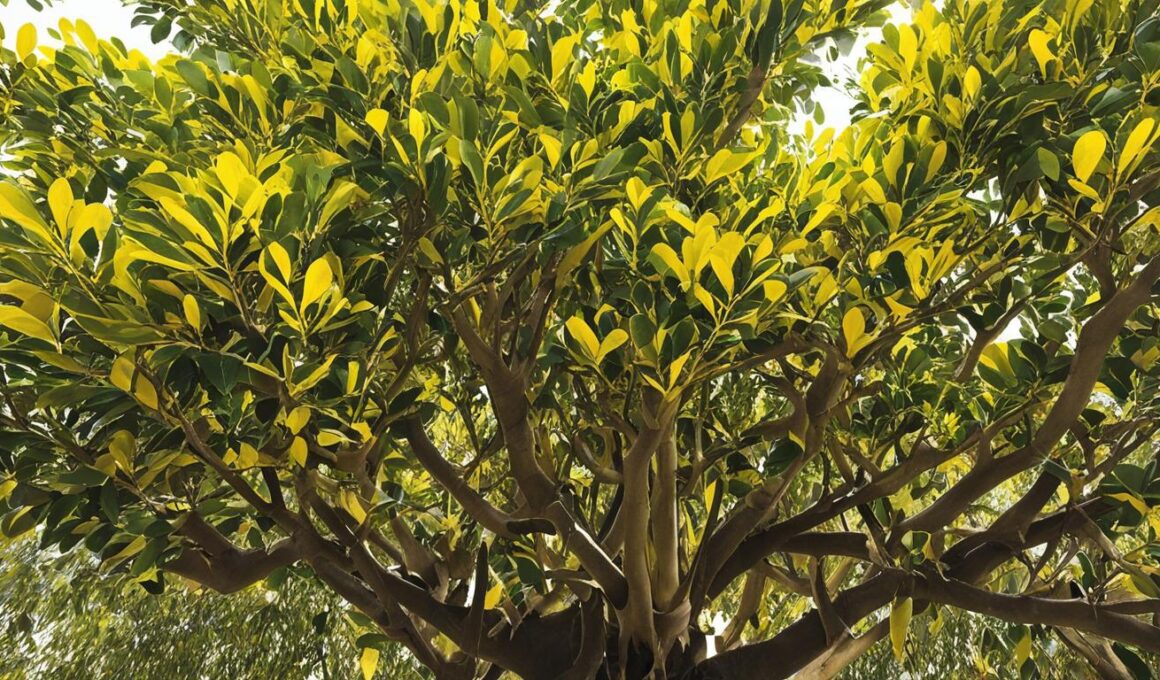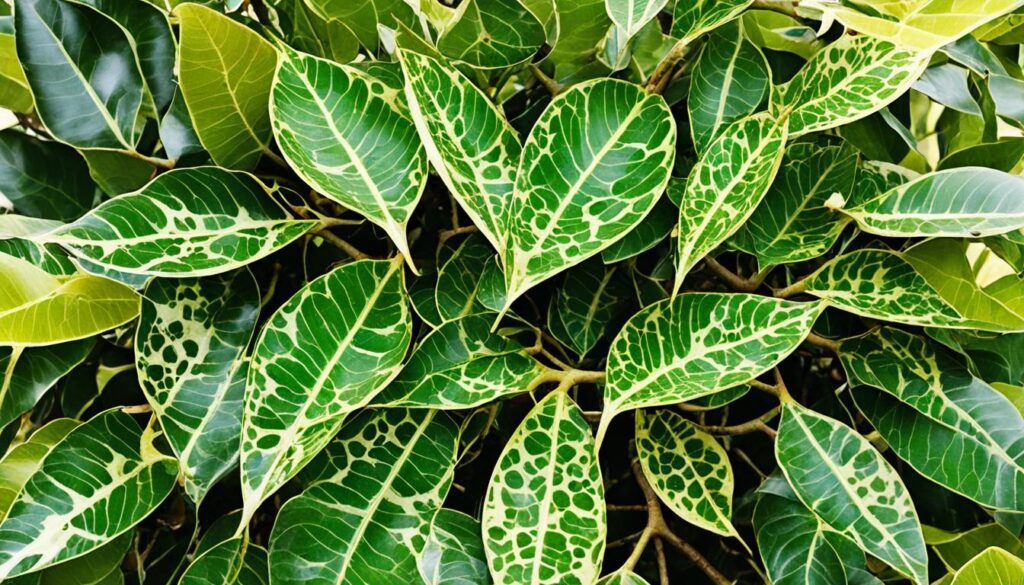If you have outdoor ficus trees, such as Ficus benjamina (Weeping Fig) or Ficus elastica (Rubber Tree), in your home or landscape, you may encounter various problems that can affect their health and beauty. It’s important to understand these potential issues and how to address them to keep your ficus trees thriving.
One common problem with outdoor ficus trees is improper watering, which can lead to leaf problems and overall stress. Ficus trees may experience yellowing, wilting, or dropping leaves when they are not receiving enough water or are being overwatered. In addition to watering issues, ficus trees can also face challenges from pests and diseases, such as mealybugs, thrips, scales, anthracnose, and bacterial leaf spot.
Proper care and maintenance are crucial for the health of your outdoor ficus trees. By providing the right amount of water, monitoring for pests and diseases, and taking prompt action when needed, you can ensure the longevity and vitality of your ficus trees.
Improper Watering and Leaf Issues
One of the most common problems with outdoor ficus trees is improper watering. Overwatering can lead to root rot, while underwatering can cause dehydration and stress. To determine if your ficus needs watering, check the top two inches of soil. If it feels saturated, the tree needs a chance to dry out. If it feels dry, the tree needs a drink.
In addition to watering issues, ficus trees may experience curling, yellowing, wilting, or dropping leaves when they are stressed. This stress can be caused by changes in the environment, such as temperature fluctuations and abrupt climate changes.
Pests and Diseases
Outdoor ficus trees are vulnerable to various pests and diseases that can significantly impact their health and overall well-being. Among the common pests that infest ficus trees are mealybugs, thrips, and scales. These pests feed on the leaves, extracting essential fluids and causing damage that may lead to the tree’s decline.
Mealybugs are easily recognizable by their distinctive waxy, white covering, while scales manifest as small, raised bumps on the leaves. Thrips cause white blotches on the foliage. To address these pests, you can start by wiping them off gently with a damp cloth or spraying them with water. However, if the infestation persists, weekly applications of Neem Oil or insecticidal soap can effectively control these pests.
In addition to pests, outdoor ficus trees can also suffer from various diseases, such as anthracnose and bacterial leaf spot. Anthracnose manifests as brown spots on the leaves, while bacterial leaf spot causes yellowing and browning of the foliage. Both diseases can lead to branch dieback and overall tree decline if left untreated.
To manage these diseases, it is crucial to prune infected foliage and ensure proper watering practices. Regularly inspect the tree for any signs of infection, and promptly remove any affected leaves or branches. Additionally, the use of copper-based fungicides can help prevent the spread of these diseases and protect the ficus tree’s health.
Conclusion
Outdoor ficus trees are prone to a variety of problems, ranging from improper watering to pest infestations and diseases. To ensure the health and vitality of your outdoor ficus tree, it is crucial to provide consistent care and address any issues promptly.
Proper watering techniques are essential for ficus trees. Regularly monitor the moisture levels of the soil and water accordingly, ensuring that the top two inches of soil are neither too dry nor saturated.
In addition to watering, vigilance in monitoring for signs of pests and diseases is crucial. Common pests that may infest outdoor ficus trees include mealybugs, thrips, and scales. Promptly remove these pests by wiping them off with a damp cloth or using water. If the infestation persists, consider using natural remedies like Neem Oil or insecticidal soap.
By understanding the unique problems that outdoor ficus trees can face and implementing appropriate solutions, such as regular inspections, proper watering, and effective pest management practices, you can maintain the beauty and vitality of your outdoor ficus tree throughout the seasons.
Are the Problems Faced by Ficus Trees Similar to those of Palo Verde Trees?
Yes, the problems faced by Ficus trees can be similar to those of Palo Verde trees. Both types of trees can be affected by common palo verde tree problems such as pests, diseases, and environmental stress. It is important to identify and address these issues promptly to maintain the health of the trees.










